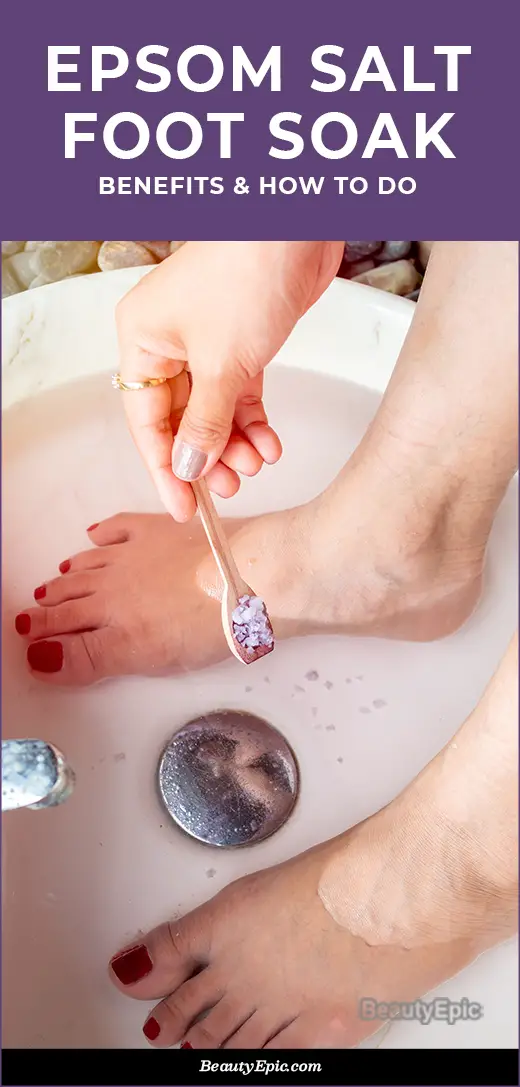Soaking wounds in Epsom salt has been a trusted home remedy for centuries, offering remarkable wound-healing properties. Epsom salt, also known as magnesium sulfate, is renowned for its anti-inflammatory, antimicrobial, and soothing effects. However, the question arises: how long should one soak a wound in Epsom salt to maximize these benefits? In this comprehensive guide, we delve into the optimal duration for Epsom salt wound soaks, exploring its healing advantages and providing practical guidance.

Image: in.pinterest.com
Anatomy of Wound Healing: The Role of Epsom Salt
Understanding the process of wound healing is crucial in determining the appropriate duration of Epsom salt soaks. Wound healing involves a complex series of biological processes that repair and regenerate damaged tissue. Epsom salt plays a vital role in this process by reducing inflammation, inhibiting bacterial growth, and promoting cell regeneration.
Inflammation is a natural response to injury, but excessive inflammation can hinder healing. Epsom salt’s anti-inflammatory properties soothe and calm inflamed tissues, reducing pain and discomfort. Additionally, the antimicrobial properties of Epsom salt effectively combat infection, preventing further damage and infection spread.
Moreover, Epsom salt’s high magnesium content contributes to cell regeneration. Magnesium plays a crucial role in DNA and protein synthesis, which are essential for the growth and repair of new tissue. By soaking a wound in Epsom salt, we enhance the supply of magnesium to the affected area, accelerating the healing process.
Determining the Optimal Duration: Evidence and Recommendations
Numerous studies have investigated the optimal duration for Epsom salt wound soaks. While specific recommendations may vary slightly, most experts agree that the ideal duration ranges from 15 to 30 minutes. Soaking for this period allows sufficient time for the Epsom salt to dissolve and penetrate the wound, maximizing its healing effects.
However, it’s important to note that excessive soaking can lead to skin irritation or dryness. It’s recommended to avoid soaking for more than 30 minutes at a time. If additional soaking is necessary due to persistent wound pain or infection, consult a healthcare professional for guidance.

Image: www.beautyepic.com
How Long To Soak A Wound In Epsom Salt
Practical Guide to Epsom Salt Wound Soaks
To prepare an Epsom salt soak, dissolve one cup of Epsom salt in a warm water bath or footbath. Ensure the water temperature is comfortable and not too hot. Immerse the affected wound in the soak for 15 to 30 minutes, allowing the Epsom salt solution to work its magic.
Gently pat the wound dry after soaking and apply a clean bandage to protect it. For optimal results, repeat the soak once or twice daily, depending on the severity of the wound.
Precautions and Considerations
While Epsom salt is generally considered safe for topical use, certain precautions should be taken to ensure a safe and effective wound soaking experience:
Avoid using Epsom salt on open wounds or deep wounds that may require medical attention.
If you have sensitive skin or any skin conditions, test a small patch of skin with the Epsom salt solution prior to soaking.
Epsom salt soaks may not be suitable for individuals with certain medical conditions, such as kidney disease or heart conditions. Consult a healthcare professional before using Epsom salt if you have any underlying health concerns.
Conclusion
Soaking a wound in Epsom salt is a simple and effective way to promote wound healing. By understanding the wound healing process and adhering to recommended soaking durations, you can optimize the benefits of Epsom salt and accelerate your recovery. Remember, if you have a severe or persistent wound, always consult a healthcare professional for proper diagnosis and treatment.





:max_bytes(150000):strip_icc()/ideas-for-removing-odors-from-wood-3536463-FINAL-54b76a445dfb41acb4ba0c413bd80e80.png?w=740&resize=740,414&ssl=1)

